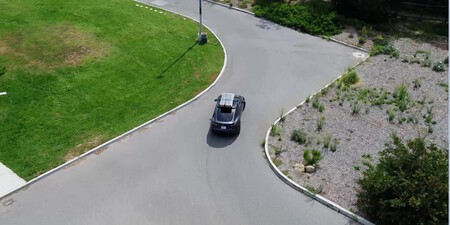Solar cars are like El Dorado for electric vehicles (EVs)—a dream solution. They promise free daily charging, potentially severing ties between electricity and oil forever.
However, the industry is still far from achieving this. Various companies have experimented with solar cars, aiming to one day sell their own models.
Toyota covered the roof of its Prius with solar panels to support the car’s electric components. Mercedes tested a similar concept with its Vision EQXX. Yet, despite traveling from Stuttgart to Silverstone—a journey of more than 745 miles—its solar panels extended the vehicle’s range by less than 30 miles.
A commercially viable solar car remains a distant goal. The Prius contributed very little. The Mercedes is a prototype designed to push efficiency limits in aerodynamics, battery chemistry, and energy consumption, making it unrepresentative of road cars. The 3.57 kWh recovered by its solar panels was significant for such a specialized vehicle but would be far less effective in a standard car.
Other ambitious solar car projects have also failed. Developers of the Sono Sion, one of the most advanced projects, ultimately canceled it. Lightyear, which once claimed its solar car could drive 40 miles daily for free, also pulled the plug. Since announcing the vehicle in 2019, its creators consistently lowered expectations—along with the projected mileage the car could achieve using only solar panels.
Yet none of this stopped a Tesla Model Y owner, who claimed on Reddit that his electric SUV has become far more efficient thanks to solar panels installed on its roof.
Of course, these claims should be taken with a grain of salt.
Quarantined

The Tesla Model Y owner says he designed a system of foldable solar panels that allows him to charge between 20 and 60 miles per day.
In his project presentation, he explains that the panels are foldable and mounted on the roof. He acknowledges that in this first version, the panels protrude about 10 inches from the car’s roof. However, in a future version, he plans to reduce the height to 6 inches, improve the fit, and create a carbon fiber support to lighten the structure.
According to the user, the Tesla Model Y will eventually carry 4,000 watts of solar panels on its roof. When deployed, they’ll capture solar energy, convert it into electricity, and recharge the car while parked.
But there are many doubts. First, he claims to be working on directly transferring solar energy to the car’s battery, which suggests that, for now, the energy is stored in a separate battery that then recharges the vehicle.
The other major question is the system’s actual efficiency. In 2019, Toyota built a Prius prototype with solar panels covering the entire roof, rear window, and hood. This surface area generated 860 watts—enough for an estimated 30 extra miles.
For the Tesla Model Y, the added weight of the panels nears the U.S. roof load limit of 165 pounds. That extra weight alone, roughly equivalent to carrying an additional passenger, will impact energy efficiency. More critically, the modification disrupts aerodynamics, significantly affecting performance. The creator admits he hasn’t measured this impact but estimates that energy consumption is 10% worse.
Because of these factors, some testers estimate the car can travel just 25 additional miles under real-world conditions. And that’s without factoring in how the added panels affect the car’s handling and ride comfort—not to mention the noise they generate.
Images | somid3



Log in to leave a comment